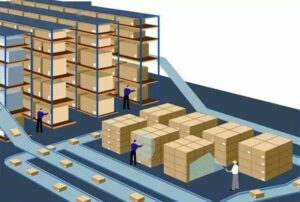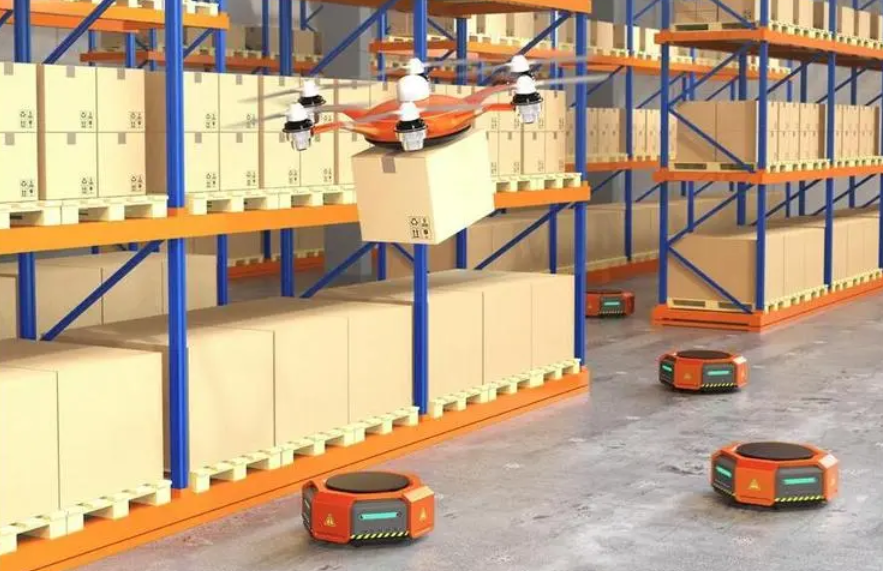Just-In-Time (JIT) inventory is an inventory management system that has been carefully planned and implemented to increase efficiency and reduce the costs associated with errors and stock handling. This system allows for materials to be ordered and received when needed without needing any excess stock to be kept on hand. By doing so, it eliminates the costs associated with overstocking and reduces the amount of time taken to organize and manage inventory.
JIT inventory is a cost-cutting strategy that has become increasingly popular in recent times. It assists businesses in eliminating waste, reducing errors, improving efficiency, and maximizing profits. This method allows companies to keep minimal stock on a just-in-time basis, meaning that excess stock is not built up and production uncertainties are avoided. This, in turn, leads to reduced costs associated with inventory handling and improved manufacturing process control. Furthermore, JIT inventory helps to minimize material wastage and increase efficiency, as well as ensuring defect-free products. It also enables businesses to analyze the market and sales better while being able to forecast demand more accurately.
Initially developed in Japan, the Just-in-Time inventory management system is designed to minimize wastage and maximize profitability. It is a strategy that guarantees Return on Investment (ROI) and enhances cash flow. As such, JIT inventory has become a widely accepted and successful cost-cutting strategy for many companies.
When Just In Time (JIT) inventory management is successful, it functions like a well-maintained and highly efficient machine that operates according to TAKT time. TAKT time is a lean production philosophy term that refers to the rate at which customer demand is created. For JIT inventory management to be successful, businesses must ensure that the TAKT time is equal to or less than the manufacturing lead time. This means that the time it takes to acquire the necessary raw materials, produce the product, and ship it to the customer should be equal to or less than the customer’s desired timeframe. For this to be possible, businesses must have a highly efficient and streamlined manufacturing process. Additionally, companies must have a precise understanding of the lead times associated with each step of the logistics chain.
Just-in-time (JIT) inventory management requires effective communication between all entities in the supply chain, such as suppliers, manufacturers, and customers. If a customer orders a product, manufacturers must be able to quickly inform the supplier so that the necessary raw materials can be shipped immediately. The primary purpose of JIT inventory management is to create a steady and consistent flow of materials and products through the production line, thereby reducing the need for inventory storage. Although it can be challenging to implement, businesses that successfully use JIT inventory management can benefit greatly.

Reduced inventory carrying costs: More inventory on hand can prevent a business from tying up a large amount of its working capital that could be better utilized for other operations. Just-in-Time (JIT) inventory management can help minimize these carrying costs by decreasing the amount of inventory that needs to be stored.
Improved cash flow: Having an abundance of inventory in stock can lead to a large amount of cash being tied up, which could be used for other purposes. Just-in-time inventory management can be beneficial in improving cash flow, as it minimizes the amount of inventory that must be paid for upfront.
Reduced production costs: Excessive production is a frequent issue for businesses that do not implement Just-In-Time (JIT) inventory management. JIT inventory management is a system of production and inventory control that only produces items when there is a customer order, thereby decreasing the cost of production.
Improved customer satisfaction: Just-in-time (JIT) inventory management can help to optimize customer satisfaction by guaranteeing that goods are always readily accessible when required. This is especially beneficial for companies that produce items with a limited lifespan or are perishable. In other words, JIT inventory management ensures that businesses have the necessary products in stock when customers need them, thereby minimizing the risk of customer dissatisfaction due to out-of-stock items.
Eliminated waste: The system also eliminates the waste associated with overproduction, as items are only produced when there is customer demand.
Just-in-Time (JIT) inventory management is a system that relies on having detailed information about customer demand to forecast when new inventory will be needed accurately. Various methods can be used to complete this forecasting, such as using historical sales data to identify trends, analyzing existing trends in the market, or even conducting market research to gain greater insight into customer needs.
A key benefit of Just-in-Time (JIT) inventory management is the use of inventory alerts. These alerts can be configured to notify the relevant personnel when inventory levels reach a certain threshold, indicating that new inventory must be ordered. This helps ensure new inventory arrives so production can continue without disruption.
Barcode and tag systems are often used in conjunction with JIT inventory management. These systems help to track inventory levels and can be used to trigger inventory alerts.
The necessity of security and backups is a crucial aspect of Just-in-Time (JIT) inventory management because this type of management relies heavily on having an uninterrupted and continual stream of materials and products. If something disrupts that smooth flow, the business can encounter serious difficulties. To avoid this, companies should institute security precautions that guard their inventory and safety stock in case of any issues.
JIT inventory systems can be a “high risk, high reward” methodology. The most significant risks include the following:
Inventory shortages: A JIT system depends on a continuous flow of inventory to maintain production levels. If there are any disruptions in the supply chain, it can lead to inventory shortages and production delays.
Increased costs: JIT systems require a high level of investment in technology and infrastructure. This can be costly and may only be feasible for some businesses.
Implementation difficulties: JIT systems can be challenging to implement and maintain and require a high level of commitment from all members of the organization.

Last updated: 2025-05-06

Last updated: 2025-04-01

Last updated: 2025-03-03

Last updated: 2025-02-05